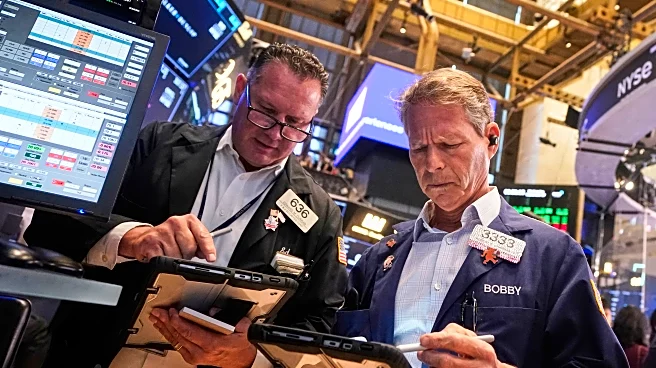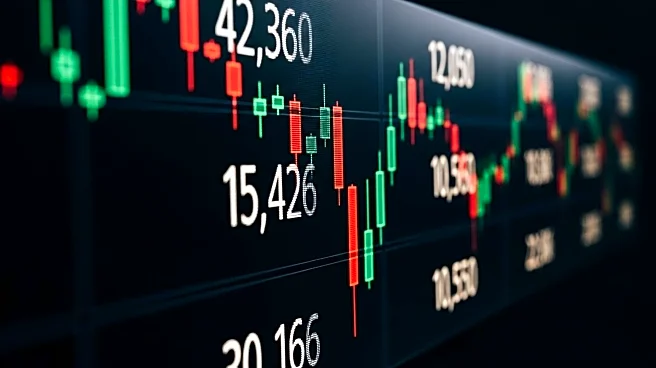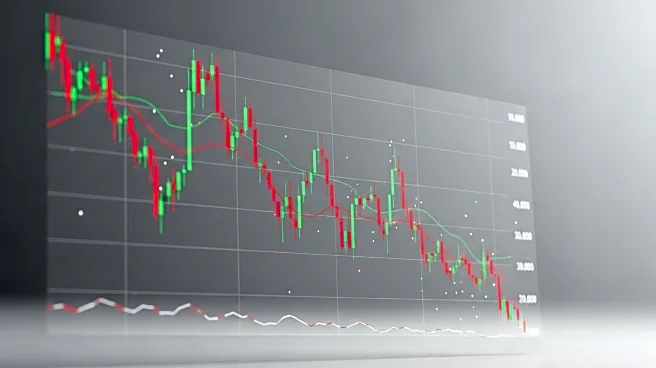What is the story about?
What's Happening?
The Dow Jones Industrial Average closed at 46,247.29, marking a rebound after a three-day losing streak. The S&P 500 and Nasdaq Composite also experienced gains, with the S&P 500 minimizing its pullback to just 0.30% for the week. Despite technical overbought conditions and seasonal patterns that typically lead to market retreats, the index remained resilient. This resilience is supported by rotational action and a dip-buying reflex, alongside reassuring data on personal income, spending, and PCE inflation. However, mega-tech leaders have shown less reliability, and regional banks have stepped back, while travel stocks have weakened. The market's stability is further bolstered by laggards like energy and commodity plays gaining traction.
Why It's Important?
The market's ability to maintain stability despite potential setbacks is significant for investors and economic stakeholders. The resilience of the S&P 500 suggests confidence in the current economic conditions, with the Federal Reserve having room to adjust rates without immediate recession concerns. This stability is crucial for maintaining investor sentiment and avoiding aggressive market behavior. The slight increase in personal income and spending, along with stable inflation rates, supports the macroeconomic premise that the economy can sustain growth without immediate intervention from the Fed. This scenario benefits investors who are wary of sudden market shifts and provides a buffer against potential economic downturns.
What's Next?
Looking ahead, the market faces potential challenges such as quarter-end rebalancing and high valuations. Credit spreads are low, limiting further improvement, and skepticism around AI remains prevalent. Despite these concerns, strategists are optimistic, with high S&P 500 targets for the next year. The market will need to navigate these factors while maintaining its current resilience. Investors will be watching for any shifts in Fed policy or bond market reactions that could impact growth. The ongoing balance between cautious bears and optimistic bulls will continue to shape market dynamics.
Beyond the Headlines
The current market conditions highlight the importance of investor sentiment and the role of macroeconomic indicators in shaping market behavior. The balance between inflation and growth remains a critical factor, with the Fed's actions closely monitored. The evolving landscape of technology and AI skepticism also presents long-term implications for market strategies and investment decisions. As the market adapts to these changes, stakeholders must remain vigilant in assessing risks and opportunities.
AI Generated Content
Do you find this article useful?













